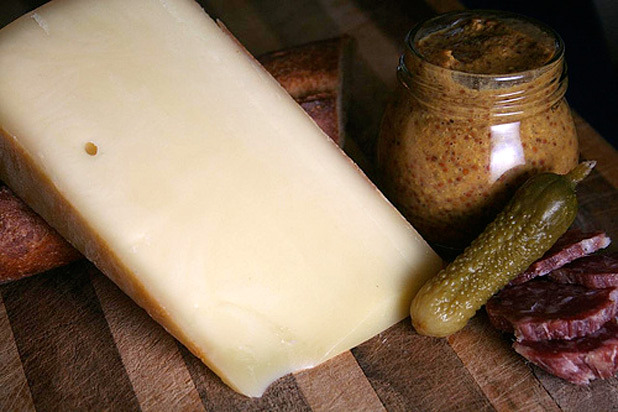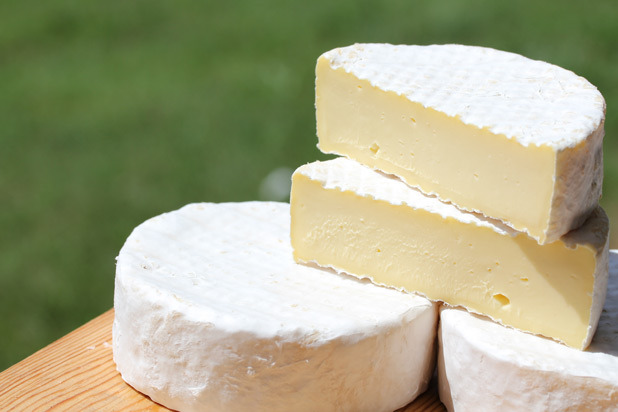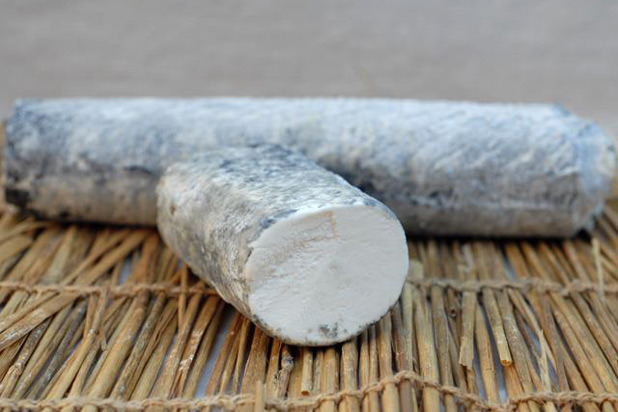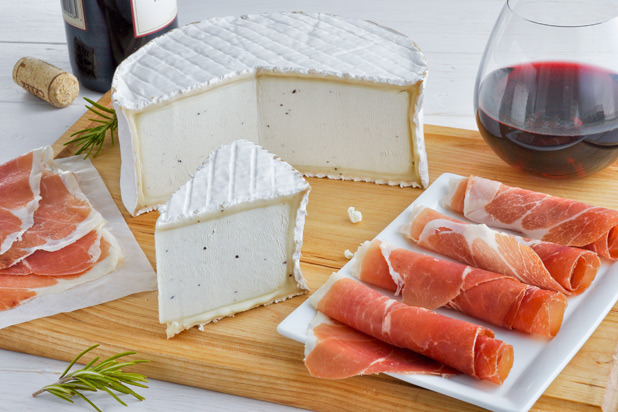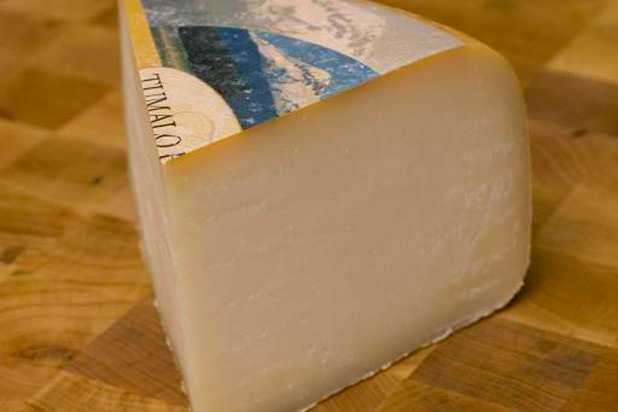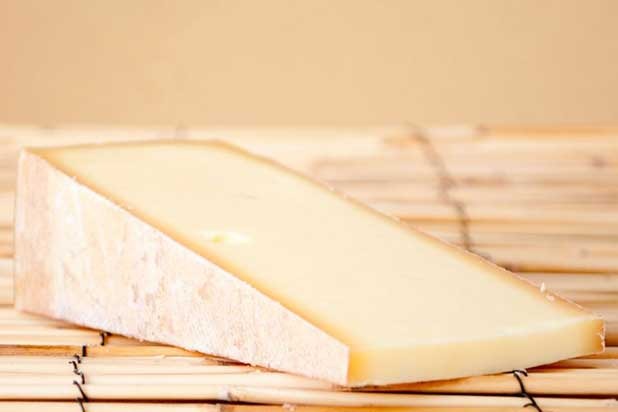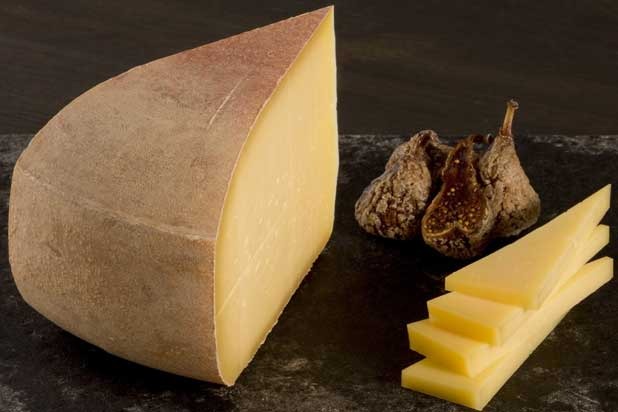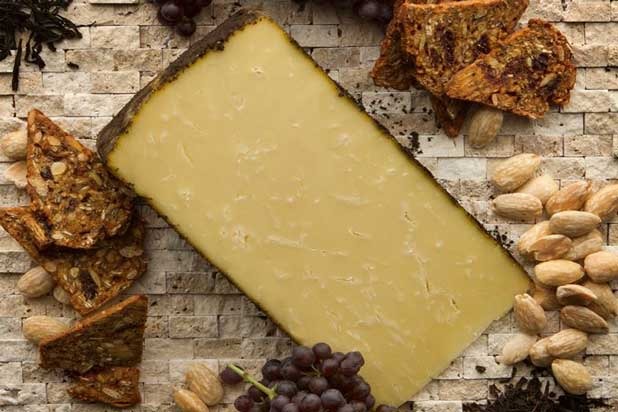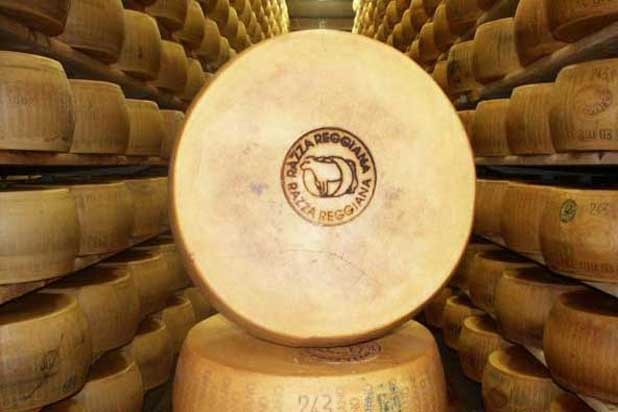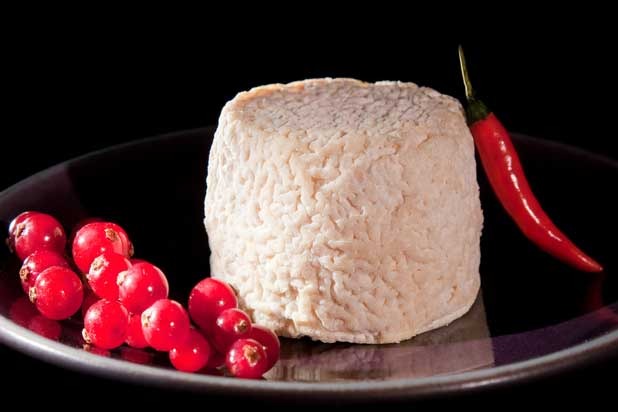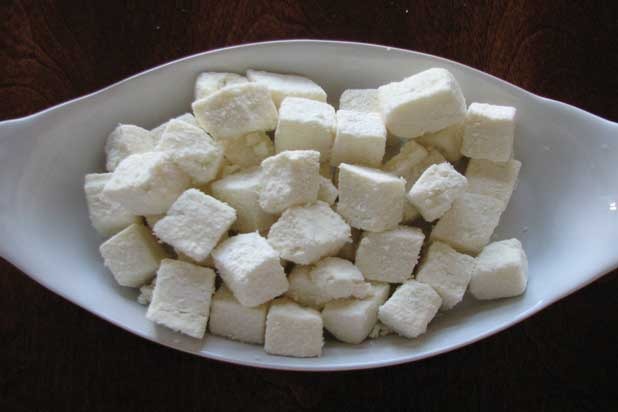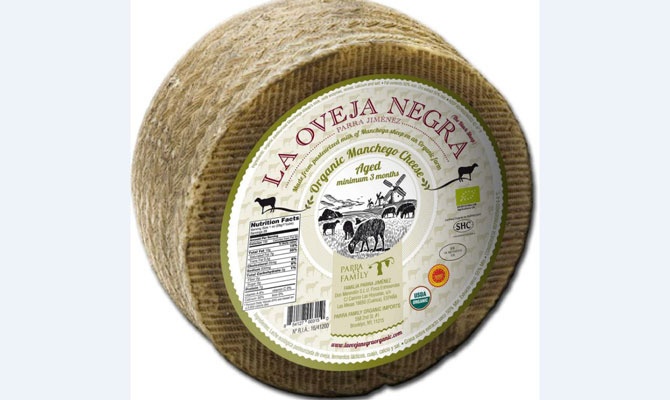Cheese Of The Week Slideshow
Along with Gruyère and Emmental, Appenzeller cheese is part of the trifecta of cheeses that go into what's generally accepted to be the most traditional Swiss fondue recipe. All three of these Swiss cheeses are perfect for melting and fantastic on their own (Gruyère is one of the world's most popular cheeses, and Emmental is the official name for what we call "Swiss cheese"), but Appenzeller sometimes takes a back seat to its more famous friends. Today we'll settle that score, as Appenzeller is our Cheese of the Week.
Appenzeller is a semi-firm washed-rind cow's milk cheese, made in the north of Switzerland. This mountain cheese got its start in monasteries, aged in cool mountain caves. While about 75 dairies currently produce Appenzeller, only three use raw milk, and it's the raw-milk Appenzeller that you should be on the lookout for.
Sweet Grass Dairy’s Green Hill
Green Hill, produced by Thomasville's Ga.'s Sweet Grass Dairy, is a handcrafted wonder, and has graced the menus at some of the country's top restaurants, including Per Se. It's a double cream, soft-ripened cow's milk cheese with a bloomy rind that's similar to Camembert, and each batch takes five hours to make. The curd is ladled into molds and ripened for two weeks before being shipped, and the result is a golden, creamy 8-ounce cheese with a rich buttery flavor that has a very loyal following.
"That golden color is the actual color of the milk," said cheese expert Raymond Hook. "The cows are grass-fed, the milk has no additives at all — in fact the farmers are the cheesemaker's parents — and they're Jersey cows, which are smaller and produce less milk, but it's of an incredibly high quality."
Sainte-Maure de Touraine
The Loire Valley in France is famous for a lot of things, especially wine and cheese, and Sainte-Maure de Touraine is one of the most famous of those cheeses. It's shaped like a small log, is ash-covered, has a straw running down the middle of it, and is one of the best pasteurized goat cheeses you'll encounter.
According to archaeological evidence, goats have been roaming the Loire Valley since well before the eighth century, and most likely their milk has been made into cheese for just as long. This cheese is formed into a log, rubbed with vegetable ash, and is aged for about three to five weeks. During this time, it develops a wrinkly (but still edible) exterior, and ages from the outside in, resulting in a luscious cream around the outside while maintaining that familiar tangy goat cheese texture on the inside. The flavor of this cheese is incredibly balanced, with lemony tang complemented by a buttery nuttiness.
Cypress Grove’s Truffle Tremor
Cypress Grove is best known for its Humboldt Fog goat cheese, but this other cheese in their canon, creamy and loaded with truffle flavor, is certainly one that's worth knowing as well.
This soft-ripened cheese was actually created by accident, by Cypress Grove founder Mary Keehn. She took some fresh goat cheese, or chèvre, and added in truffles, but the resulting product had a flavor that highlighted neither the chèvre nor the truffles. In a last-ditch effort, she inoculated the cheese with mold, and allowed it to become a bloomy-rind cheese, fresh-ripened in this case. Over time she perfected the formula, molding the cheese into 3-pound wheels and allowing it to ripen for about 12 to 14 days, and the end result was the creamy, earthy cheese we see today.
Cheese has that creamy, crumbly, almost fudgy consistency and floral minerality of the finest goat cheeses, with a potent but not overpowering earthy flavor and fragrance added by the black summer truffles. As the cheese continues to age (its total life span is about 10 weeks), the outermost layer inside the rind continues to break down in a process called proteolysis, which gives it a more "melty" consistency and adds to the cheese's complexity.
Tumalo Farms’ Classico
There aren't a whole lot of aged goat cheeses on the market, and the reason for that might be the fact that Tumalo Farms has essentially perfected the process. Their flagship Classico is a semi-firm beauty, still retaining that tangy minerality of fresh goat cheese while incorporating flavors of brown butter, roasted nuts, and honeysuckle.
Started in 2004 by WebMD co-founder Flavio DeCastilhos, the company, based in Central Oregon, now makes 12 artisan cheeses, 10 of which are goat cheeses. The Classico is the most renowned, however, and has won eight major awards since 2007.
The cheese begins with goat's milk, cultures, rennet, and salt. It's cave-aged for three to six months, is wiped and turned daily, and the end result is a wheel that's about 10 pounds. The finished product is a cheese that's not too hard, doesn't have any of that familiar fresh goat cheese texture, and is supremely delicious.
Spring Brook Farm’s Reading
Reading is a washed-rind cow's milk![]() cheese from Vermont's Spring Brook Farm. It's aged for about three months, is unpasteurized, and is as close to flawless as cheese can get.
cheese from Vermont's Spring Brook Farm. It's aged for about three months, is unpasteurized, and is as close to flawless as cheese can get.
Spring Brook Farm only has about 40 Jersey cows on their pasture, so the milk for this cheese is brought in from neighboring farms (the majority of their own milk is used for the flagship cheese, Tarentaise). Each wheel weighs about 20 pounds, and has a pinkish hue from the good bacteria. The cheese has been modeled after French Raclette, and has many of the same qualities: a rich, buttery color, a soft, dense, and creamy texture, and full-bodied flavors of grains and the pasture.
Uplands Cheese’s Pleasant Ridge Reserve
Pleasant Ridge Reserve, produced by Wisconsin-based Uplands Cheese, is on a tear. In the past 10 years, it's won the American Cheese Society's "Best in Show" award a whopping three times during their annual competition, most recently in 2010, which is truly astounding due to the fact that on average more than 1,400 cheeses are entered into the competition. It's considered the Oscars of the cheese world, and for the past decade, Pleasant Ridge Reserve has been Meryl Streep.
So what makes this cheese so good? This Alpine-style cheese starts with the grass. "These cows only eat fresh grass," Hook said. "They can only graze in the pasture from May through October, and even then if the weather isn't good, they sell the milk instead of making cheese with it." During peak season, a batch can yield up to nearly eighty 10-pound wheels of cheese per day, but some seasons less cheese is produced if conditions aren't perfect.
The cheese is aged in ripening rooms built into the creamery, where they're rubbed with brine several times per week to encourage the development of good bacteria. Each batch needs to age for a different period of time before it's ready to be eaten, but certain wheels are kept around for more than a year, and are sold as "Extra Aged."
TeaHive
There are plenty of cheeses that are rubbed down with flowers, herbs, and other botanicals, but there's only one cheese on the market that's rubbed down with tea: TeaHive, made by the Utah-based Beehive Cheese Company.
 Slideshow: Cheese of the Week Slideshow
Slideshow: Cheese of the Week Slideshow
This semi-firm cow's milk cheese is rubbed with black tea and bergamot oil during its three-month aging process, and the non-obvious connection certainly works: this cheese won first place in 2012 from the American Cheese Society. The flavor of the tea comes through, as well as its citrusy undertones, and the Jersey cows graze on Utah wildflowers all summer long and are hormone-free.
Parmigiano-Reggiano
True Parmigiano-Reggiano is made in a very specific region of Italy, and the best you'll find in the United States is what's also sold at New York's Eataly. This cheese is made from the red cows of Reggia, in the province of Reggio Emilia. These cows have been making milk used in this cheese since the barbarians invaded eons ago, and were actually endangered in the 1980s. Today they're thriving in the area, and the higher butterfat level and protein count in the milk makes this cheese undoubtedly great.
In order to produce this cheese, the raw milk is cooked and the curds are pressed into giant wheels, rubbed with brine, and left to age for a minimum of two-and-a-half years (most other Parmigiani only age for two years). The resulting cheese must be cracked instead of cut, and develops amino acid crystals, a true sign of proper aging. The flavor is intense and salty, but well-balanced and grassy, with a nutty aroma and flavor that's redolent of the pastures the cows grazed on.
Le Chevrot
Le Chevrot is called "the Rolls Royce of goat cheeses" in its native France, and one taste will show you why. It's creamy, minerally, earthy, has a hint of toasted grain, sweet and tangy, and is one of the finest examples of goat cheese on the market today.
It's produced by a 100-year-old co-op in France's Charentes-Poitou area, under the official name of Sèvre & Belle Le Chevrot. The dairy farms that belong to the co-op produce the milk, and the cheese is hand-ladled into molds. Over the next three weeks its edible rind takes on a wrinkled appearance, and after it ships it can be eaten at any point between three and seven weeks. The cheese directly beneath the rind becomes creamier as it ages, but the center maintains the dense, clay-like texture that goat cheese is known for. When it's fresh it has a predominantly sweet and tangy flavor and goes best with white wine, and when it's older it's more grain-forward and works better with a red like gamay.
Paneer
If you've ever encountered paneer, it's most likely been at an Indian restaurant, in dishes like saag paneer (with spinach), palak paneer (with peas), paneer tikka, or the dessert ras malai. And if you've ever eaten the cheese in one of these dishes, you'll most likely know how simple and it is, unlike most others that are available.
Paneer is a fresh, cow's-milk cheese that's made with lemon juice instead of rennet, which gives it a subtle tang. Its texture is similar to that of firm tofu, and, like tofu, when it's cooked, instead of melting it firms up and takes on the flavor of whatever it's cooked in. This allows it to be a great source of protein for vegetarians, and it adds great textural contrast in dishes it's used in.
Manchego
Manchego is one of the most popular cheeses in the market, and arguably the most widely eaten sheep's cheese outside of the pecorino family. It's available at just about every cheese shop and most supermarkets these days, and is easily recognized by its zigzag greenish-gray waxy rind. But the manchego we're talking about today is the highest-quality one that you'll find in the U.S., and it's called La Oveja Negra.
The difference between this cheese and what you'll find in the supermarket all comes down to the milk. Le Oveja Negra's milk is produced in La Mancha, Spain, from Manchega black sheep, the sheep that's historically been used for production of the finest manchego but was phased out in the 1970s. There are only about 10,000 of these sheep left in existence, and 1,300 of them live on this farm, which was founded by brothers Francisco, Javier, and Luis Parra in 1993 after they realized that it was nearly impossible to find high-quality, organic manchego made in the traditional style.
